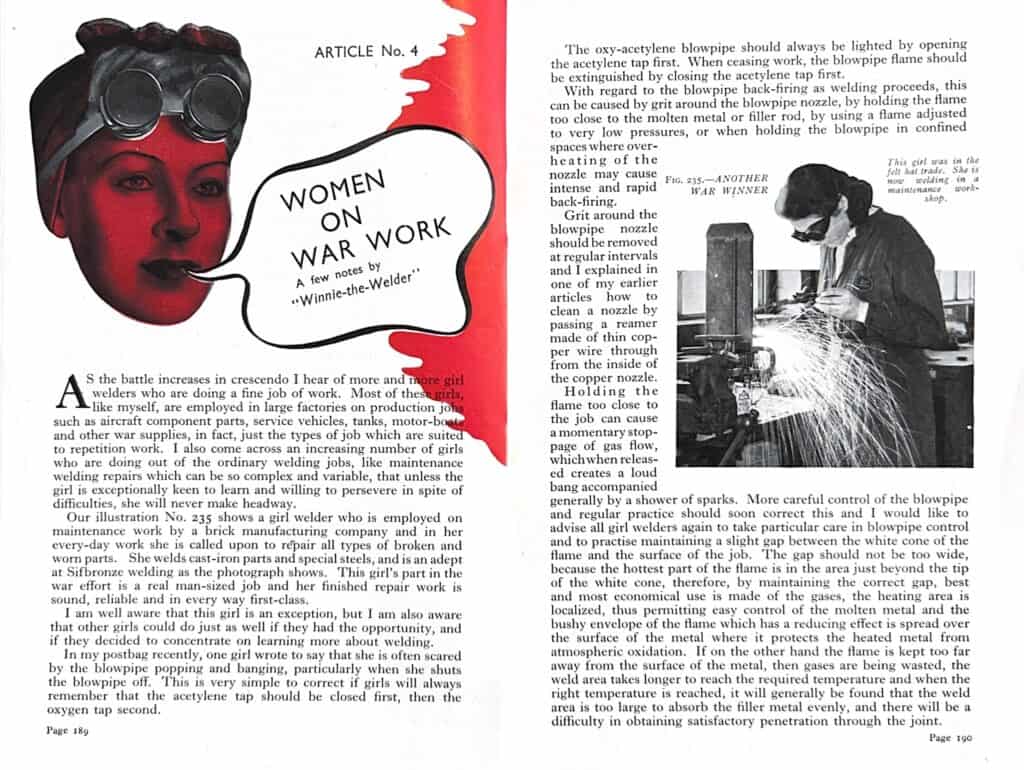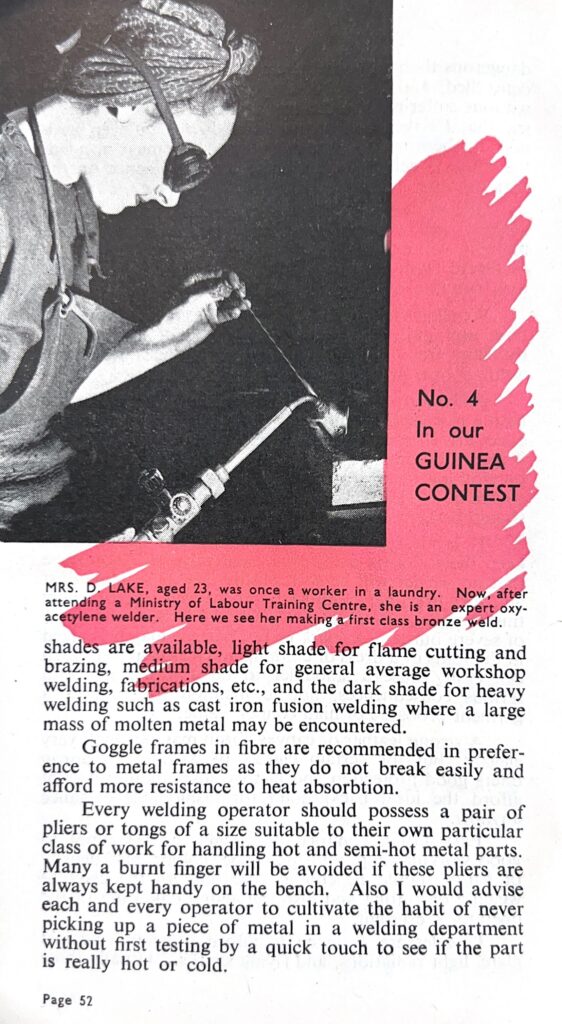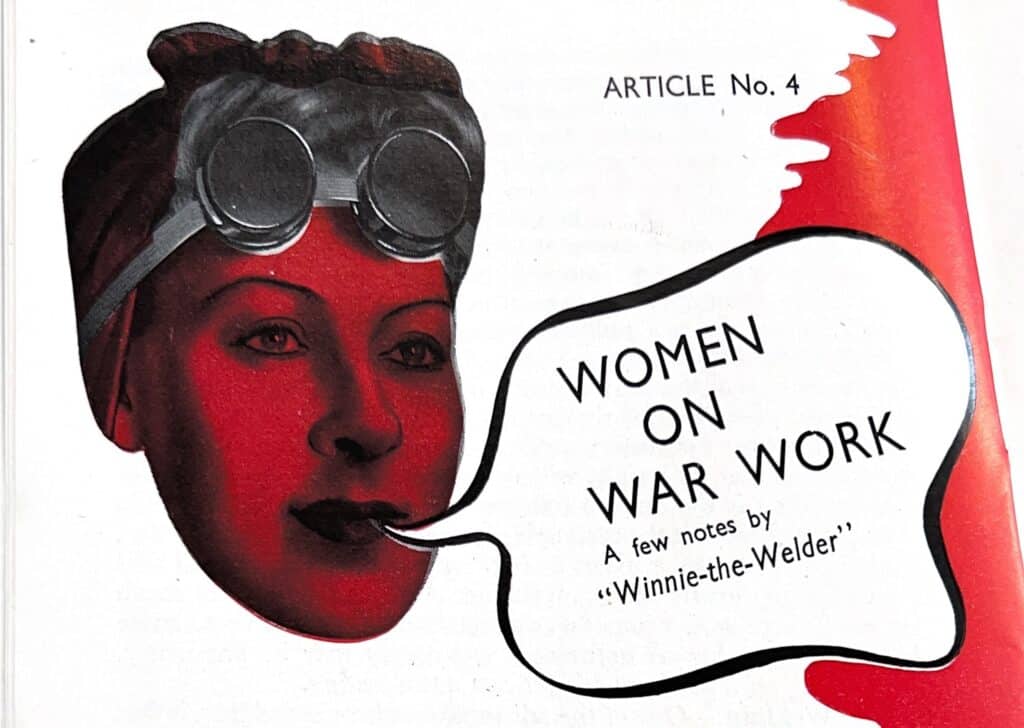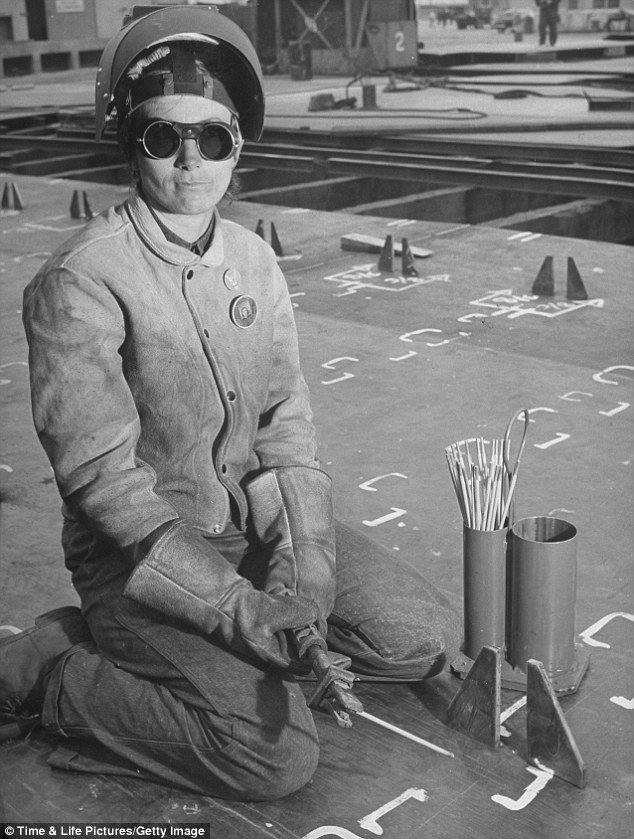Background
In the early 1940s, the world was engulfed in the chaos of World War II. As the battlefronts expanded, so did the demand for war supplies, ranging from aircraft components to tanks and motor-boats. With many men off to fight, there was a significant shortage of skilled labor back home. This created an unprecedented opportunity for women to step into roles that had traditionally been dominated by men. One such role was welding, a critical skill needed to keep the war machinery running smoothly.
The Transformation of Mrs. D. Lake
Mrs. D. Lake, aged 23, is a testament to this era of transformation. Once a laundry worker, Mrs. Lake attended a Ministry of Labour Training Centre where she trained to become an oxy-acetylene welder. Her journey from the laundry to the welding shop was emblematic of the wider societal shift that saw women stepping into industrial roles in large numbers. Mrs. Lake became an expert in oxy-acetylene welding, a skill essential for repairing and fabricating components vital for the war effort. She became known for her first-class bronze welds, a skill she honed with dedication and the right training.

“Winnie-the-Welder” and the Role of Women
As the war progressed, stories like Mrs. Lake’s became increasingly common. An article titled “Women on War Work” by “Winnie-the-Welder” highlighted the significant contributions of female welders. These women were employed in large factories on production jobs involving aircraft parts, service vehicles, tanks, and other war supplies. They also tackled more complex tasks like maintenance welding repairs. These jobs required a keen eye for detail and a willingness to persevere despite the challenges.
“Winnie-the-Welder” noted that many female welders excelled at their jobs due to their meticulous nature and dedication. For example, one girl welder employed by a brick manufacturing company was responsible for repairing all types of broken and worn parts. Her adeptness at Sifbronze welding, a process supported by the Suffolk Iron Foundry (SIF), was crucial. SIF, founded in 1925, had become a significant player in providing high-quality welding materials and training, which were indispensable during the war.
The Role of Suffolk Iron Foundry (SIF)
SIF played a critical role in supporting the war effort by ensuring that female welders had access to the best materials and training. The company’s Sifbronze welding rods were known for their reliability and ease of use, making them a preferred choice for both production and maintenance welding. SIF also provided guidance on proper welding techniques, which was crucial in preventing common issues like blowpipe back-firing and ensuring consistent weld quality.
SIF’s contribution was not limited to materials. The company also helped in spreading best practices among welders. For instance, “Winnie-the-Welder” emphasized the importance of proper blowpipe control and regular maintenance of welding equipment, advice that was consistent with SIF’s training manuals. This guidance helped welders avoid mistakes and improve their efficiency and safety.

The Impact of Female Welders
The integration of women into welding roles had a profound impact on the war effort. These women were able to produce high-quality work that was essential for maintaining the machinery of war. Their contributions extended beyond mere labor; they brought a new level of precision and care to the field. As “Winnie-the-Welder” pointed out, maintaining a slight gap between the white cone of the flame and the job ensured better control and use of gases, an important technique for achieving optimal welds.
Conclusion
The story of Mrs. D. Lake and her peers is a powerful example of how women stepped up during a time of need, transforming industries and contributing significantly to the war effort. Supported by companies like the Suffolk Iron Foundry, which provided the necessary materials and training, these women proved that they were more than capable of handling demanding welding jobs. Their legacy is a reminder of the critical role that women played in shaping the industrial workforce during World War II.



- References –
- Woman welding a ship1941 – https://www.dailymail.co.uk/femail/article-2034095/From-steel-welding-munitions-making-womens-labour-circa-1941.html
- Female welders at work in a steel mill – https://www.dailymail.co.uk/femail/article-2034095/From-steel-welding-munitions-making-womens-labour-circa-1941.html
- Article Links –
- Women in Welding: The Past, Present, & Future – https://www.gray.com/adprocessequipment/insights/women-in-welding-the-past-present-and-future/
- Celebrating Women Welders: Honouring Their Legacy and Impact – https://askforney.com/celebrating-women-welders-honoring-their-legacy-and-impact/#:~:text=Many%201940s%20women%20played%20crucial,construction%20of%20essential%20naval%20vessels.
- Women Welders in WWII – https://www.tws.edu/blog/welding/women-welders-in-wwii/
- Winnie The Welder: Female Welders Of WWII – https://www.weldingsuppliesfromioc.com/blogs/blog/winnie-the-welder-female-welders-of-wwii?srsltid=AfmBOoqUncS-RKsgn8TWD6Aafh2xosvqQQUZCGB6O6_gKflPZ0dGJZFg
